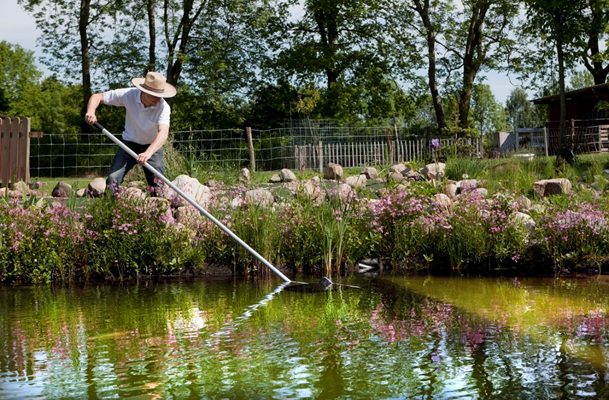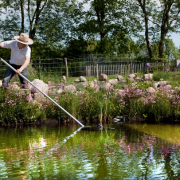As the weather warms up and pond owners start preparing their water features for spring, one question comes up every season—does the pond need a full clean-out, or can a partial clean-up do the job?
The short answer is yes—to all options. Every pond is unique, and the cleaning method depends on how it is built, what lives in it, and how well it has been maintained. While some prefer a full clean every spring, others might get by with just a filter rinse and debris removal.
Understanding What Works for Your Pond
Not every pond needs to be completely drained and pressure-washed each year. In fact, depending on the pond’s eco-balance, skipping a full clean-out can sometimes be more beneficial.
Especially with reliable equipment like Oase pressure filters, you can maintain healthy water conditions without tearing everything apart annually. These filters, recommended by That Pond Guy, are excellent at keeping water clean and fish-friendly with minimal disruption.
Why Less Can Sometimes Be More
For natural ecosystem ponds with fish, rocks, plants, and bacteria, a full clean-out every year may not be necessary. If your pond is not overloaded with fish or debris, a light cleaning can help maintain health without disrupting balance.
A minimal clean might include:
- Skimming out loose debris
- Cleaning biological and mechanical filters
- Trimming aquatic plants
- Adding beneficial bacteria and barley extract
- Doing a 20% water change.
This gentle approach reduces stress and supports natural recovery.
When a Full Clean-Out Makes Sense
Still, there are times when a full clean-out is the best option—particularly if the pond has a heavy buildup of sludge, excessive algae, or murky water. For koi ponds with high fish loads and less-than-ideal filtration, a biannual deep clean might even be necessary.
A professional clean-out usually involves:
- Transferring fish safely to aerated tubs
- Draining the pond and washing all surfaces
- Trimming plants and removing deep-set debris
- Cleaning and resetting filters, skimmers, and rock work
- Refilling the pond with dechlorinated water and reintroducing fish gradually.
Professionals can also spot issues like liner leaks, filter wear, or early signs of fish illness, all while helping you maintain proper water chemistry.
Balancing Cost, Effort, and Outcome
Whether you opt for a light skim or a deep clean, the choice ultimately comes down to your pond’s condition, your budget, and your time. Many pond owners skip a deep clean one year and go for it the next. Others stay hands-off and let nature take the lead. Either way, as long as your water remains clear and your fish stay healthy, you are on the right track.
Quick Tips for Smarter Spring Pond Care:
- Don’t overstock your pond with fish
- Minimize leaf fall using netting in autumn
- Choose efficient filtration systems like Oase pressure filters
- Introduce plants to absorb excess nutrients
- Add beneficial bacteria regularly to boost bio-balance.
Final Thoughts
Spring cleaning your pond does not have to follow one set rule. It is all about finding what works best for your water features and your lifestyle. Sometimes, a bit of maintenance is all you need to get the maximum out of your pond—nature regularly knows how to do the rest.














Comments